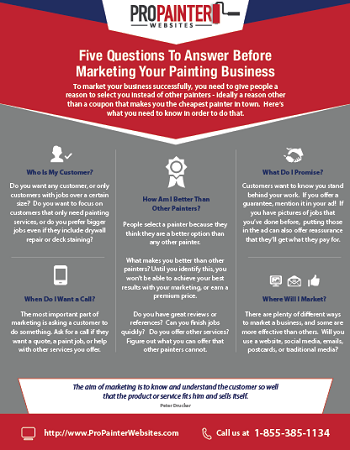Discover Exactly How Seasonal Impacts Can Affect The Effectiveness Of Commercial Exterior Paint And Discover The Most Positive Times To Ensure Long Lasting Outcomes For Your Job
Discover Exactly How Seasonal Impacts Can Affect The Effectiveness Of Commercial Exterior Paint And Discover The Most Positive Times To Ensure Long Lasting Outcomes For Your Job
Blog Article
Developed By-Doherty Rosendal
When you're intending a commercial exterior painting task, seasonal variables can make or damage your outcomes. You'll wish to think about exactly how temperature and humidity impact paint application and drying out times. Selecting how much do painting services cost can ensure your paint adheres correctly and lasts much longer. But which seasons are absolutely the most effective for this sort of work? Allow's explore the key elements that can influence your task's success.
The Effect of Temperature on Paint Application
When you're preparing a commercial exterior painting task, the temperature level can substantially affect how well the paint adheres and dries out.
Preferably, you wish to paint when temperatures vary between 50 ° F and 85 ° F. If it's also cold, the paint may not heal effectively, leading to issues like peeling off or splitting.
On the other hand, if it's also hot, the paint can dry also swiftly, stopping appropriate bond and resulting in an uneven surface.
You ought to likewise take into consideration the time of day; early morning or late afternoon supplies cooler temperature levels, which can be more desirable.
Always examine the manufacturer's suggestions for the details paint you're using, as they commonly offer assistance on the perfect temperature variety for ideal results.
Humidity and Its Impact on Drying Times
Temperature level isn't the only ecological factor that influences your industrial external paint project; humidity plays a substantial duty too. High humidity degrees can decrease drying times considerably, affecting the general quality of your paint work.
When the air is filled with moisture, the paint takes longer to heal, which can cause concerns like bad attachment and a greater danger of mildew growth. If you're repainting on an especially damp day, be gotten ready for extensive wait times in between coats.
It's crucial to keep an eye on regional weather and strategy as necessary. Ideally, aim for moisture levels in between 40% and 70% for optimal drying out.
Maintaining these factors in mind guarantees your project stays on track and supplies a long lasting coating.
Best Seasons for Commercial Outside Painting Projects
What's the best time of year for your commercial outside paint projects?
Spring and early loss are normally your best bets. Throughout these periods, temperature levels are mild, and humidity levels are frequently lower, creating perfect conditions for paint application and drying out.
Stay clear of summer's intense heat, which can create paint to completely dry also rapidly, causing bad attachment and finish. Similarly, winter months's cool temperature levels can prevent proper drying and healing, running the risk of the durability of your paint task.
Aim for days with temperatures between 50 ° F and 85 ° F for optimal results. Bear in mind to check the neighborhood weather prediction for rain, as wet conditions can ruin your project.
Planning around these elements ensures your painting project runs efficiently and lasts longer.
Final thought
To conclude, planning your business exterior painting projects around seasonal considerations can make a substantial distinction in the result. By scheduling work during the ideal temperature levels and moisture degrees, you'll ensure better adhesion and drying times. Keep in interior paint price per square foot to watch on regional weather prediction and choose the right time of year-- springtime and very early autumn are your best bets. Taking these steps will aid you accomplish a durable and specialist coating that lasts.
